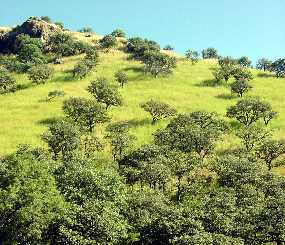 |
 |
| Above two: Oak woodland near Maycoba, Sonora during the summer rainy season. Photos: Mark Dimmitt |
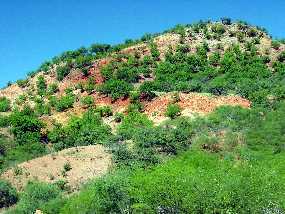 |
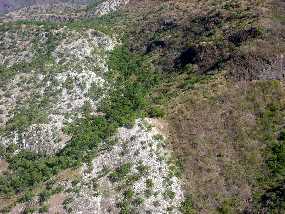 |
| Above two: At elevations normally vegetated with tropical deciduous forest, oak woodland occurs on volcanic gossans with hydrothermally altered soils. These soils are highly acidic and markedly different in color from adjacent unaltered soil, usually red. Left: near Tepoca, Sonora. Right: between Alamos and Rancho Santa Bárbara, Sonora; the altered soil is whitish on the left. The darker soil is covered with tropical deciduous forest. Photos: Mark Dimmitt |
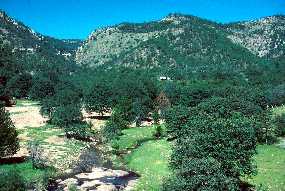 |
 |
| Above two: Sparsely-treed grassy meadows surrounded by oak-wooded hillsides at Los Pilares (left) and El Kípor, Sonora. Photos: T.R. Van Devender |
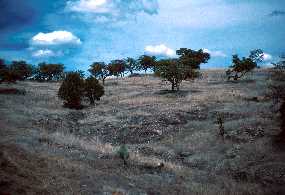
Trees may be sparse on thin soils or south-facing slopes. This community is also called oak grassland. East of Yécora, Sonora. Photo: T.R. Van Devender |
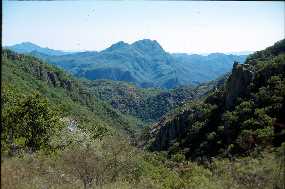
At higher elevations and on good soils oak woodland may form nearly continuous canopies and become forest. Trail to Rancho Santa Bárbara, Sonora. Photo: S.A. Meyer |
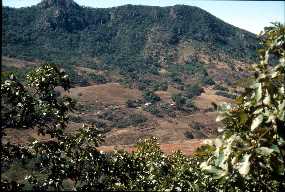
Rancho Santa Bárbara, northeast of Alamos, Sonora. Photo: S.A. Meyer |
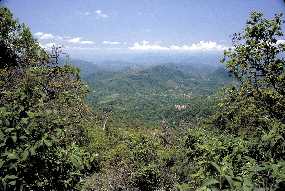
View toward San Bernardo, Sonora. Photo: Mark Dimmitt |
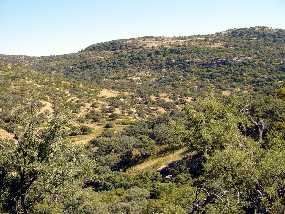 |
 |
| Above two: Oak woodland in the Sierra de Mazatán, Sonora. Photos: Cory Martin |
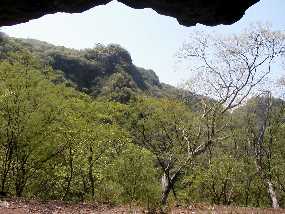 |
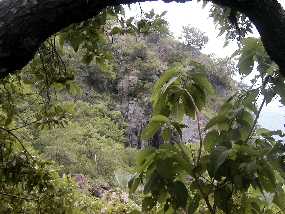 |
| Above two: Transition between oak woodland and tropical deciduous forest on the trail to Rancho Santa Bárbara, Sonora. Photos: Martín G. Figueroa |
